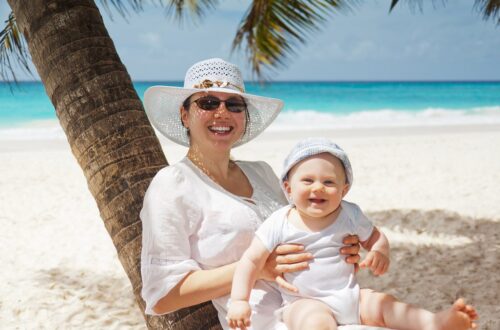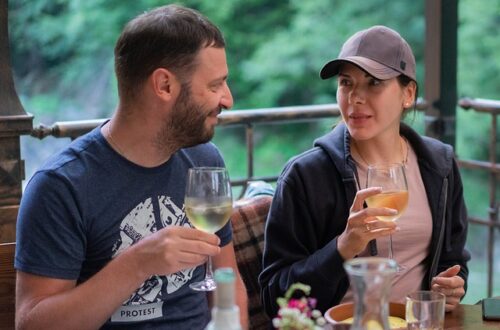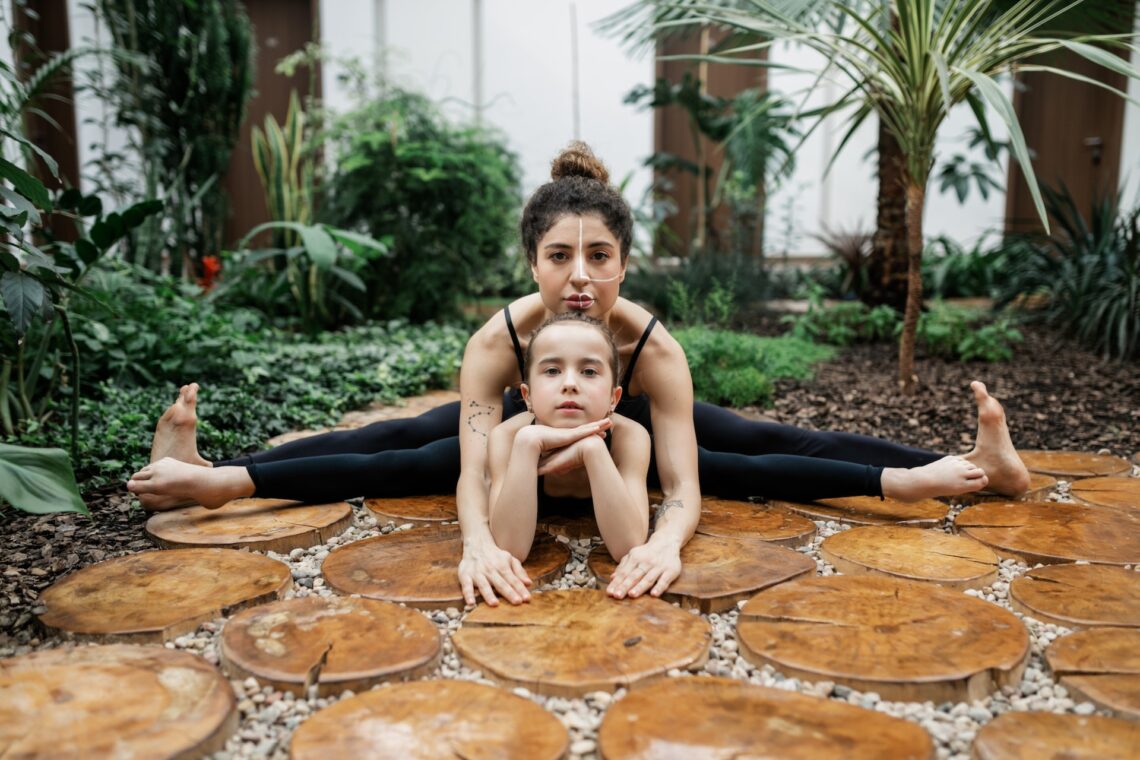
Yoga Poses for Children: 13 Fun Poses Your Kids Will Love
Looking for a captivating and healthy activity for your little ones? Discover the hidden gem of physical activity: yoga! It’s fun, keeps kids active, and enhances motor skills.
The best part?
You don’t need to be an expert for your little ones to enjoy the amazing benefits of this exercise. Trust me, kids’ yoga is easier than you think. It’s all about simplicity, playfulness, and having a blast!
Discover these 13 yoga poses for children and straightforward instructions.
But first, let’s discuss the essentials you’ll need to do yoga.
Essential Materials Needed for Yoga
Here are a few essential items you’ll need as you do yoga poses for children:
Yoga mat or a soft blanket. It’s best to use an anti-slip and cushioned mat for safety.
Comfy clothing that allows freedom of movement. This is especially important when practicing yoga poses. Encourage them to wear flexible items such as tank tops, leggings, and shorts.
Water and water bottles. Staying hydrated is crucial, especially during physical activities.
Patience and a positive attitude. Kids learn through trial and error, so why not encourage your little ones to have a blast and give their all?
With all the necessary items at hand, let’s dive into the exciting part and discover a variety of enjoyable yoga poses specifically designed for kids.
13 Yoga poses for children
These yoga poses for chidren are not only fun but also promote flexibility, strength, and mindfulness. Each pose can be modified to suit your child’s age and ability. Let’s explore them one by one:
1. Tree Pose (Vrksasana)
The tree pose is one of the yoga poses for children that provides fun and balance.
To start, stand with your feet together, while keeping your spine straight and arms at the sides. Make sure your shoulder blades are down and back.
Focus on an object in front of you for balance and slowly raise one foot off the ground.
Bend your knee, allowing it to extend out to the side as you press the sole against the inner thigh of your standing leg.
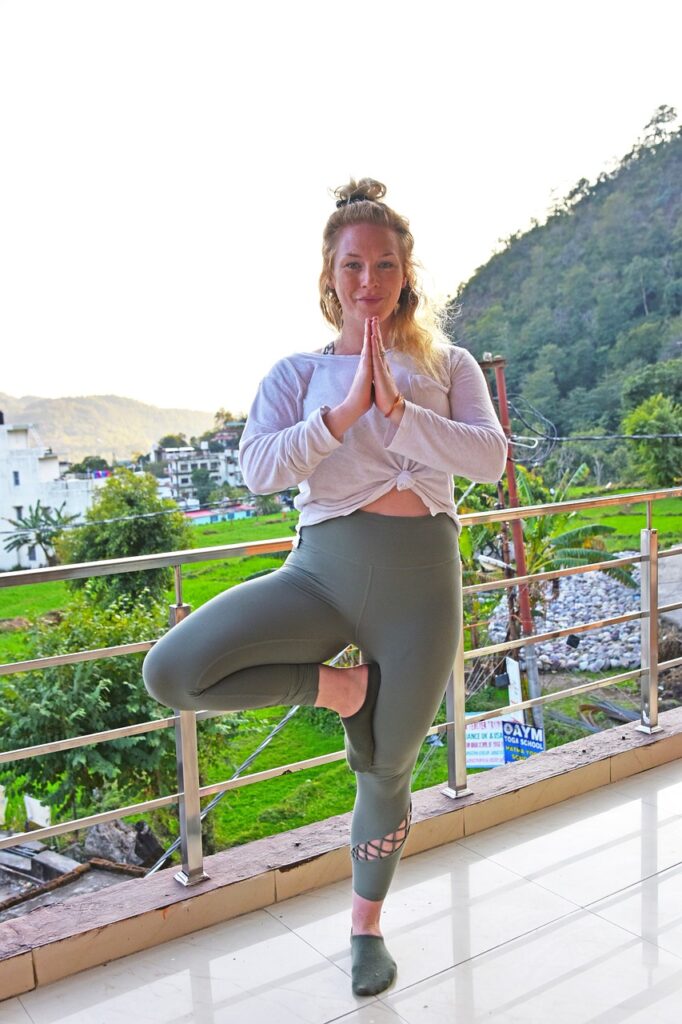
Once balanced, raise both arms while gazing up at the sky. Slowly place your arms over your head and bring your palms together.
Hold for a few breaths for some meditation, then switch sides.
Remember, it’s okay if your child can’t get their foot up high on their leg, placing it lower is perfectly fine!
2. Downward Dog (Adho Mukha Svanasana)
The downward-facing dog pose is a great way to build the stamina of you and your kids. Why is that?
Well, this is one of the yoga poses for children that strengthens the arms and legs while also stretching them.
To begin, have your little ones start in a tabletop pose with their knees on the ground. Make sure their hands are directly underneath their shoulders and they keep their back flat like a tabletop.
Tuck your toes and lift your hips up towards the sky, making an upside-down V shape. Make sure they press their palms flat and spread their fingers wide.
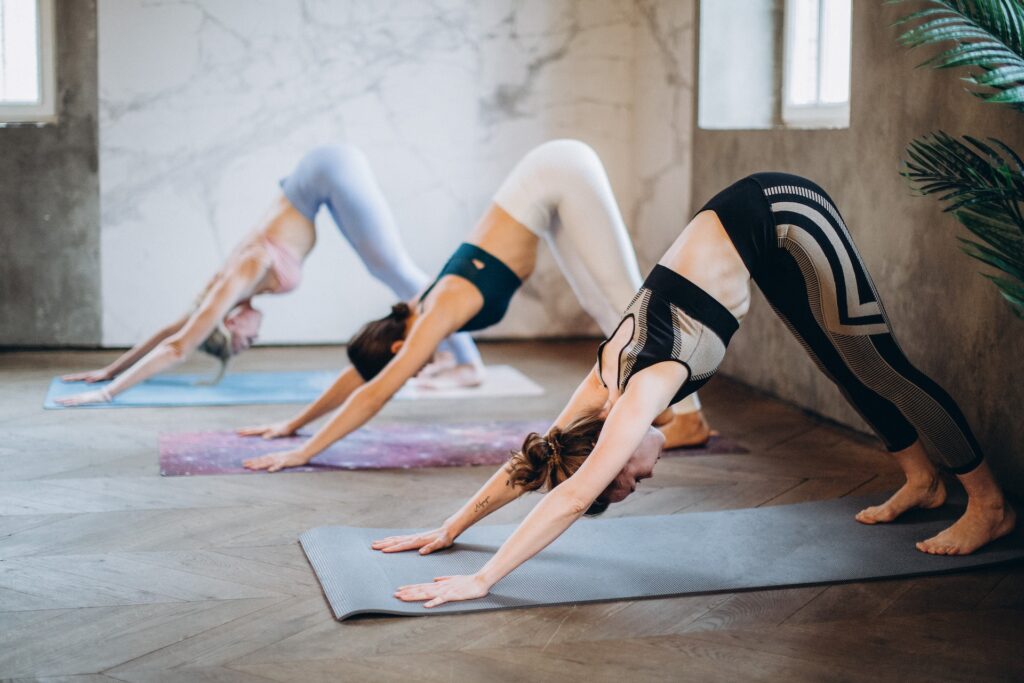
Encourage them to straighten their legs as much as possible while stretching the heels down toward the ground.
For added fun, ask your child to “bark” in downward dog. This way, yoga practice of this pose becomes an interactive game.
3. Mountain Pose (Tadasana)
Any standing position with your kids is a great way to help build their confidence and self-esteem.
The mountain pose is the perfect posture for teaching them the importance of grounding oneself with dignity and strength.
To begin, have your child stand tall with feet together and arms at their sides. Then slowly have their hands open up and their forearms reach out towards the sides.
Instruct them to focus on their breath and take slow, steady breaths for five counts. Ask them to envision themselves as a mountain – tall and strong – while feeling the strength of the earth beneath their feet.
Remind your little one that just like a mountain, they too can stand tall and proud with grace and beauty – even during times of difficulty and adversity.
This is an invaluable lesson in learning how to be strong yet gentle at the same time.
4. Cobra Pose (Bhujangasana)
When you think of the cobra pose, think of a snake slowly lifting its head in the air.
This pose not only stretches your child’s upper body and lower back but also strengthens their arms and legs.
To start, have your kids lay on their tummy with feet together and palms flat underneath their shoulders. Make sure to keep the elbows tucked close to the body while they press down into their
Gently push yourself up from the floor, straightening your arms and lifting your chest and torso, while ensuring your hips remain grounded.

For a little creativity, take a deep breath and ask your child to “hiss” like a snake while in a cobra pose. Now that’s a silly and fun, but effective way to practice kids yoga.
5. Cat-Cow Pose (Marjaryasana-Bitilasana)
The cat-cow pose may seem challenging to do, but it’s an easy pose that helps to boost more movement, improve spinal flexibility and relieve tension especially in your inner thigh.
To begin, start in a tabletop position with your palms flat beneath your shoulders and knees directly below your hips.
On an inhale, arch the spine and let your head hang freely while looking up at the sky. This is known as the cow pose.
As you exhale, round your back and tuck your chin in towards your chest. This is known as the cat pose.
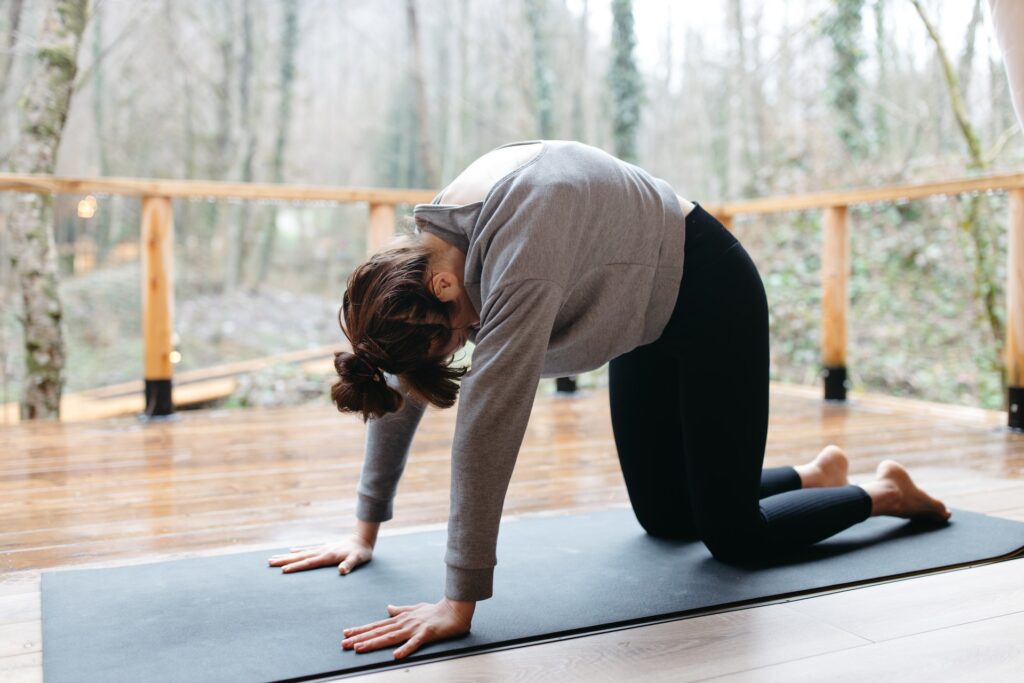
The goal of this pose should be to have fun with it, so remind your kids that they don’t need to be perfect. They can practice at their own pace and keep enjoying yoga!
Heck, you can “moo” while looking up at the sky and then “meow” when tucking your chin.
Trust me, it’s a great way to get some giggles out of your little ones.
6. Child’s Pose (Balasana)
The child’s pose is a wonderful way to encourage relaxation and provide your little ones with an opportunity to rest. Allow me to guide you on how to perform this soothing pose:
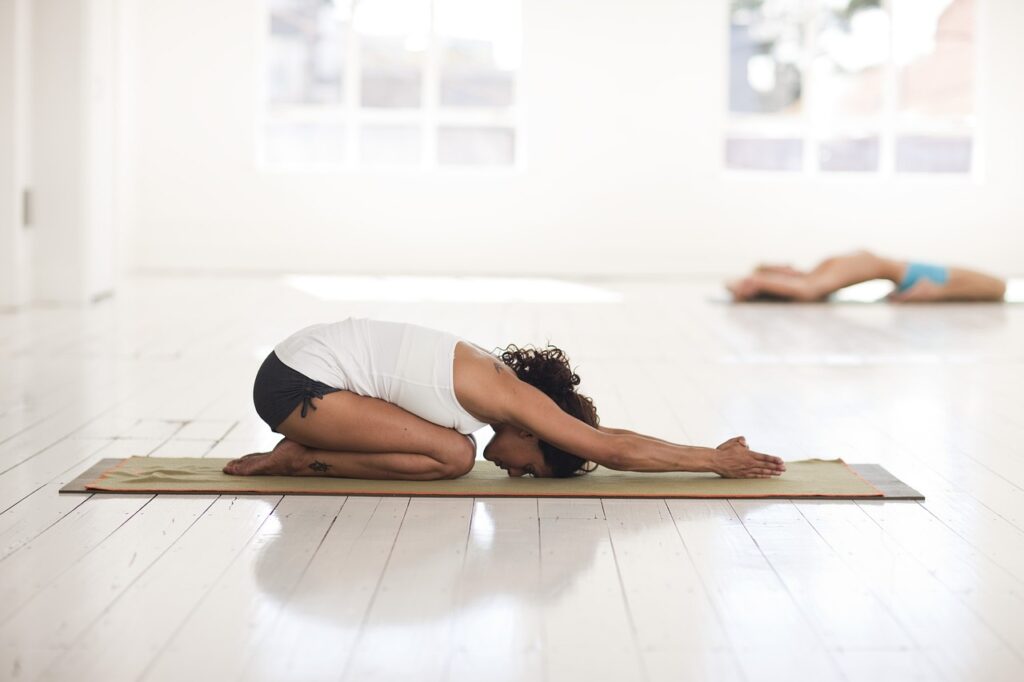
Get your child to kneel on the floor, facing away from you, setting the stage for a fun and engaging activity. Ensure their knees are hip-width apart and their buttocks gently and comfortably rest on their heels. Let the adventure begin!
Next, you can instruct them to bring their arms alongside their body, palms flat against the floor. Gently ask them to lean forward until their forehead lightly touches the ground.
Not only does this pose help improve posture, but it also relieves stress and fatigue. To make it even more enjoyable, you can compare it to an insect in hibernation mode!
Your child will surely find it amusing as they enjoy the benefits of this calming pose!
7. Happy Baby Pose (Ananda Balasana)
Doing the happy baby pose with your children is sure to bring out their inner joy!
To get started, lie on your back and draw the knees up towards the chest. Grab onto the outer part of your feet with both hands and pull them in closer to the body. Make sure to keep a relaxed grip while allowing gravity to open up the hips.
Encourage your children to be creative with this pose by laughing and making funny faces. If they struggle to stay still, show them how to gently rock back and forth while holding onto their feet. You can also sing a favorite song to add music and rhythm to the practice.
Remember, this is kids pose helps with relaxation and brings a sense of peace to the mind and body. Plus, it works great in calming down cranky kids.
8. Warrior Pose II (Virabhadrasana II)
Think about it: yoga poses for children can be more than just fun. They can help to foster strength and confidence!
That’s exactly how the warrior pose II can help. This powerful pose helps to increase energy while promoting stability and balance.
Start by having your little one stand with feet together and hands on hips.
Step the left foot back about 2-4 feet from the right leg, ensuring toes point straight ahead with a bent knee at a 90-degree angle over the ankle.
Take a big step forward with the right foot, turning it outward towards the left side. Align the back heel with the arch of the front foot.
Encourage your child to lift their arms and look up while breathing deeply and being still.
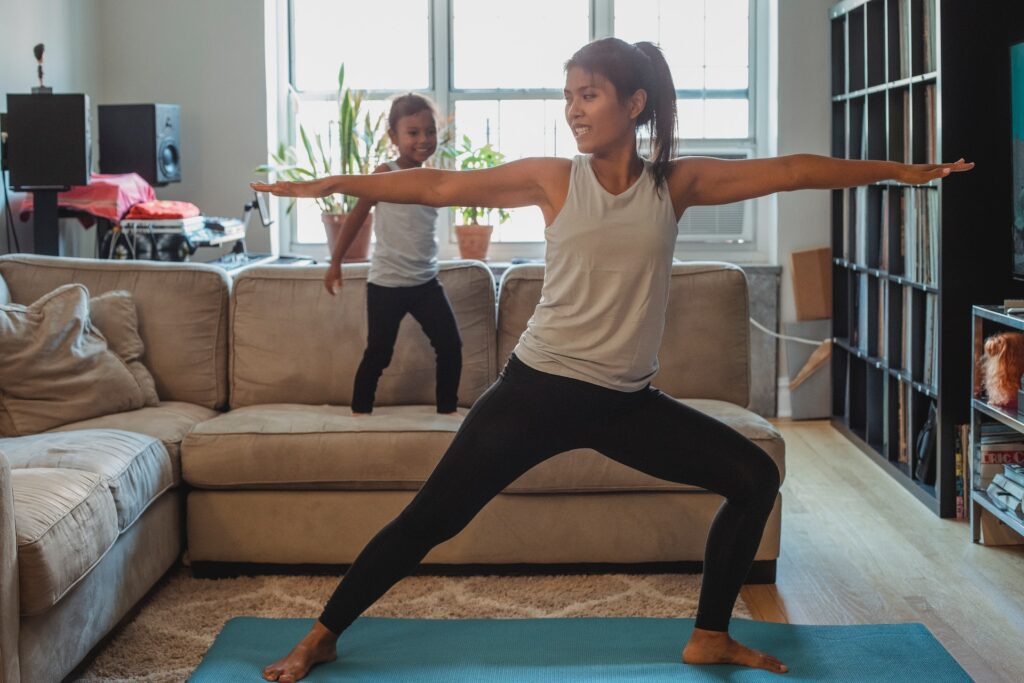
If balancing is challenging, use foam blocks under their hands for stability. It will help them maintain the pose until they’re ready to transition. Encourage your child to pretend they’re a warrior on a mission and roar like a champion.
This will help to make yoga practice more exciting!
9. Butterfly Pose (Baddha Konasana)
Don’t worry if you’re not a yoga teacher! This yoga pose offers a delightful opportunity to connect with your children. It helps to stretch and strengthen the thighs, hips, and groin muscles, while also enhancing upper body posture and digestion.
Additionally, it works wonders in reducing stress and headaches. And believe me, even your kids may need some stress relief!
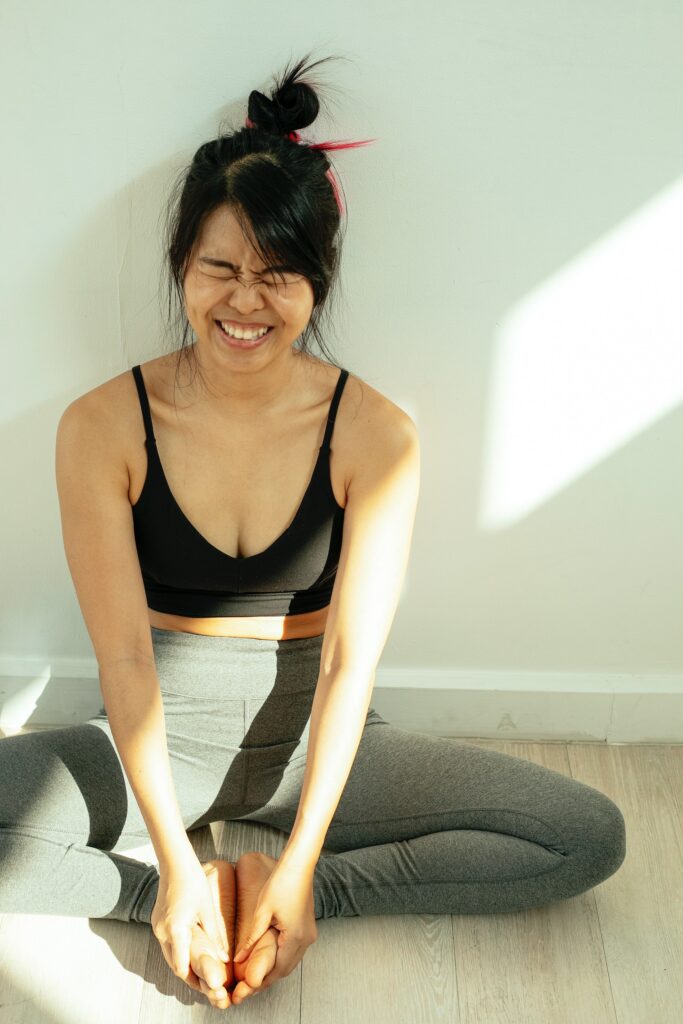
To start, sit on the floor with your feet together. Now, here’s where the fun begins: ask them to move their knees up and down like a butterfly flapping its wings.
This will help to open the hips and allow your child to relax and enjoy this pose without any strain. Once they’ve mastered the movement,
If you want to take things up a notch, suggest some fun activities like flying or flapping your wings. Have them open and close their legs while counting to five, then switch sides.
This opportunity offers a fantastic way to boost your child’s physical strength while having a great time bonding together!
10. Easy Sitting Pose (Sukhasana)
This simple yoga pose serves as a wonderful gateway to mindfulness practice for children. Begin by sitting comfortably on the floor, ensuring a tall and straight spine. Now, guide your little one to take a few deep breaths while counting from 1 to 5.
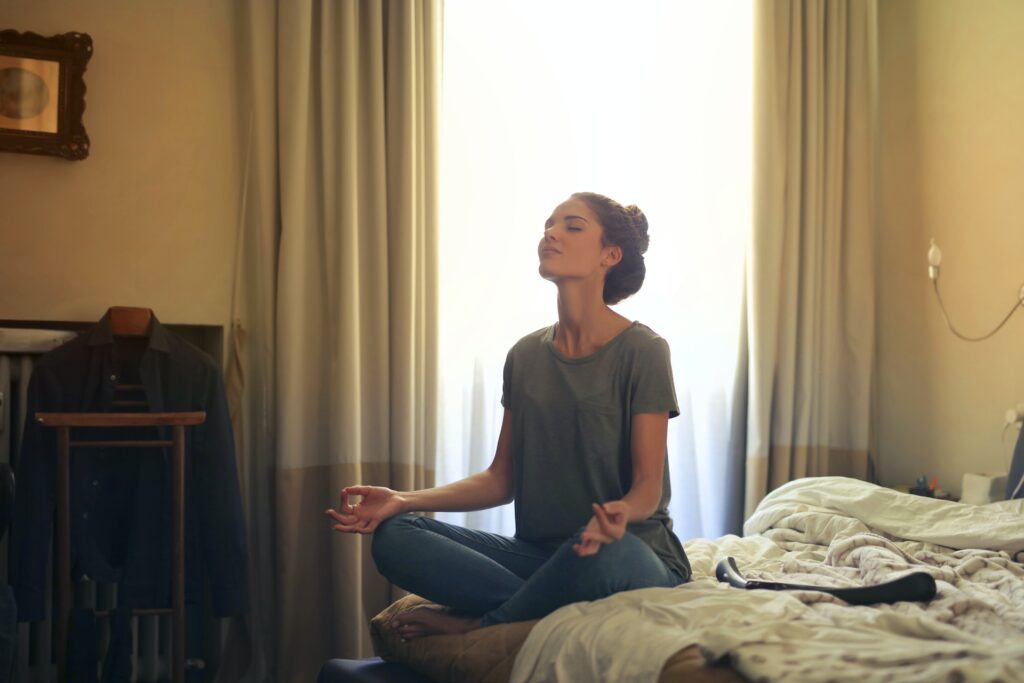
Once they settle in, invite them to truly feel the ease and tranquility, as they become one with their breath. Encourage them to visualize the gentle flow of air, entering and exiting their bodies, as they embark on this serene journey of mindfulness. For added effect, invite them to place a hand on their belly to feel its gentle rise and fall with each breath.
To ignite their creativity, suggest that their tummies are delightful balloons waiting to be filled with air and released. This delightful exercise not only helps them relax but also equips them with invaluable tools for managing stress levels effectively.
11. Frog Pose (Mandukasana)
There are many different yoga poses for children you can teach and the frog pose is a great way to get them hopping!
To start, have your little one sit with legs bent and feet close together. Make sure both knees are pointing outwards, as they’re standing up on their toes – just like a frog would do.
Invite your children to feel the stretch in their inner thighs and pelvis by bending forward slowly while keeping their back straight. If they find it difficult to reach the floor, you can use a cushion or blanket for added support.
Once your child’s body has settled into the posture, encourage them to hop around and make frog noises while spreading joy and enthusiasm!
This wonderful yoga pose not only helps develop strength and coordination but also encourages imaginative play.
So get on your hopping feet and have some fun!
12. Bridge Pose (Setu Bandhasana)
No need for a formal yoga class to include the bridge pose in your kids’ practice. This is one of the yoga poses for children that can be done anytime and helps stretch and strengthen back and abdominal muscles.
Note that this isn’t an easy yoga pose that can be done without guidance. However, it can bring calmness, relaxation, and well-being to your children.
Have flat on their back, feet firmly planted on the ground. Encourage lifting hips while pressing shoulder blades and feet together for support. If they struggle to hold it for long, here’s a fun tip: hold for a few seconds, take a quick breather, and repeat!
Their hamstrings and glutes will benefit greatly from this pose, as it helps to lengthen and strengthen those muscles.
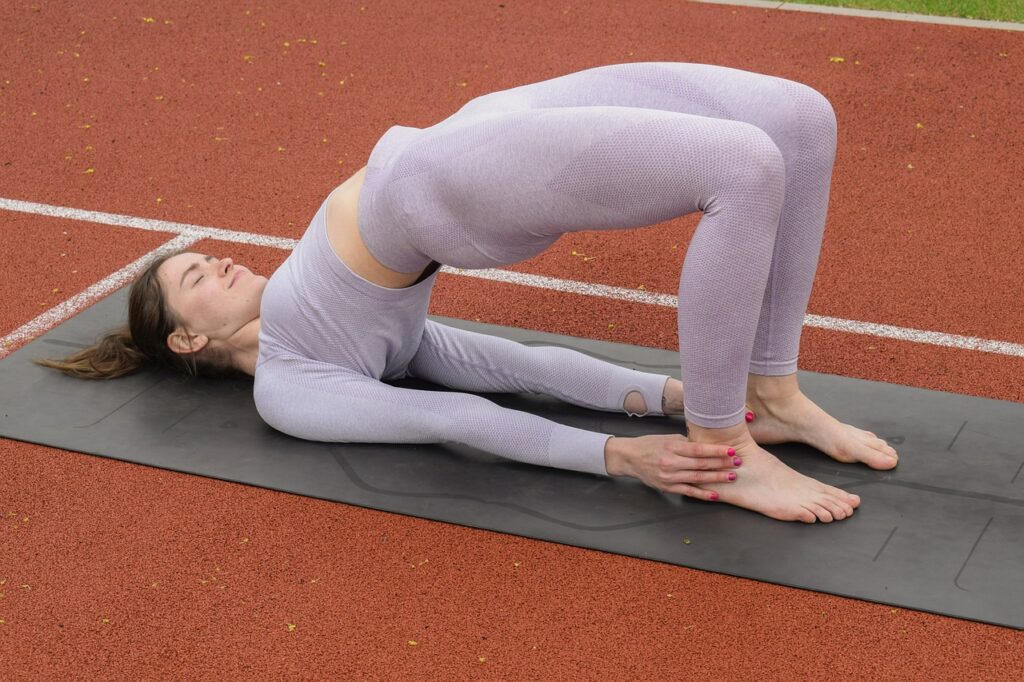
When practicing the bridge pose with your child, encourage them to imagine themselves as a sturdy bridge, connecting two parts of a beautiful landscape. Remind them to breathe deeply and stay grounded, just like the foundation of a bridge.
13. Corpse Pose (Savasana)
When you think about the corpse pose, the first thing that comes to mind is a neutral position that promotes relaxation.
This peaceful pose can offer a much-needed rest and invigoration for your little one after doing all these fun yoga poses.
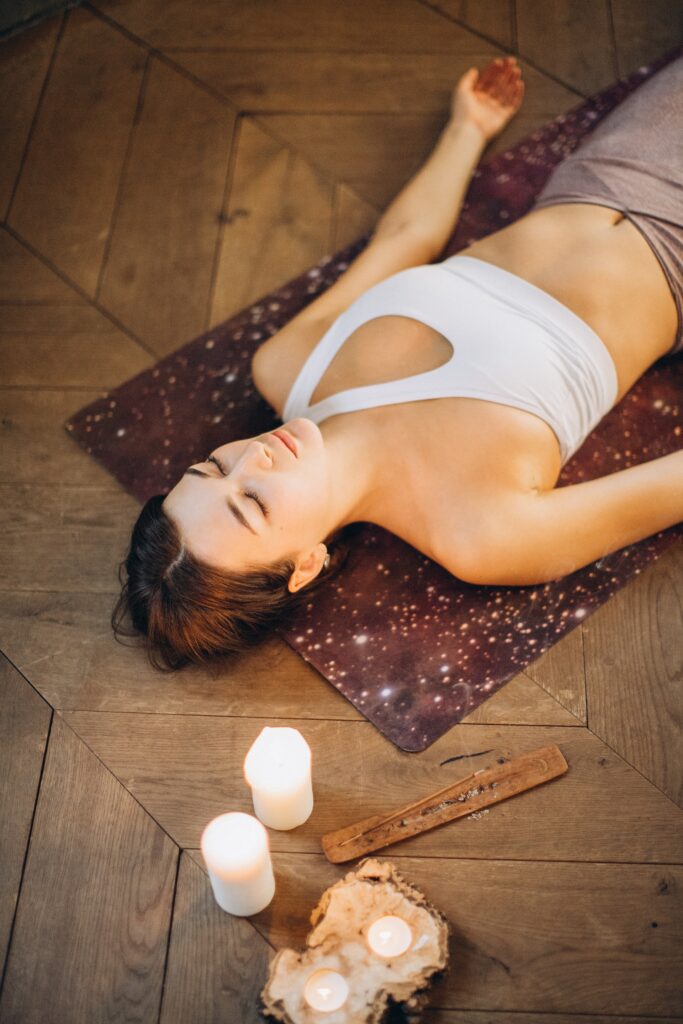
To help them relax, invite your child to lie flat on their back with arms by their sides and legs stretched out. Then, guide them through some deep breathing exercises while paying attention to the sensations in their body.
This is oneof the yoga poses for children that can truly allow kids to experience a sense of calm and stillness. Encourage your child to imagine themselves as a peaceful sleeping star, radiating tranquility and serenity to the world around them.
Encourage relaxation by visualizing tension leaving each body part with deep breaths. Let them embrace serenity and tranquility in an empty vessel.
What is the best age to start teaching my child yoga?
The best age to start teaching your child yoga is around 3-4 years old. At this age, children have developed enough coordination and body awareness to engage in basic yoga poses and follow simple instructions.
However, it’s never too late to start introducing yoga to children of any age. These yoga poses for children can be modified to suit different age groups and abilities. For younger children, you can make the poses more playful and imaginative, incorporating storytelling and animal movements. As they grow older, you can introduce more challenging poses and focus on building strength, flexibility, and mindfulness.
Remember that yoga is not just about the physical poses, but also about developing a connection between mind and body. Encourage your child to listen to their breath, explore their feelings, and practice gratitude during their yoga practice.
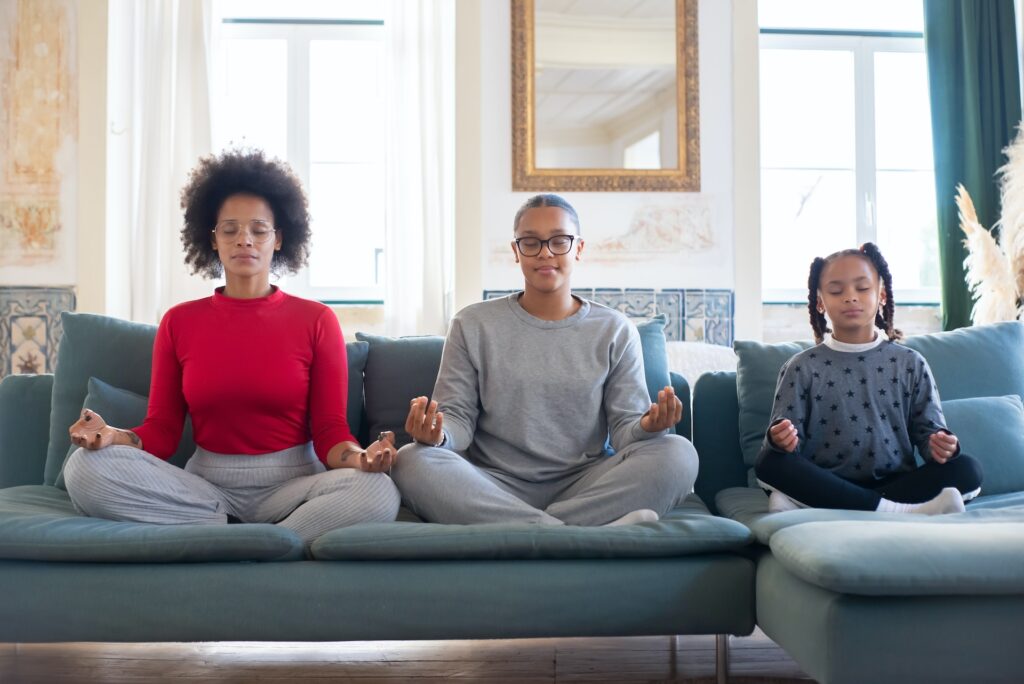
By starting early and making yoga a fun part of your child’s routine, you are helping them cultivate a lifelong habit of self-care and mindfulness. As they grow older, they will have a solid foundation in yoga that can support them through the ups and downs of life.
In addition to the physical benefits, yoga also promotes emotional well-being in children. It teaches them how to manage stress, improves concentration and focus, and boosts self-esteem. By practicing these yoga poses for children, they valuable life skills such as patience, resilience, and self-discipline.
How can I make yoga stretching fun for kids?
To make yoga fun for kids, it’s important to incorporate elements of play and creativity into the practice. Here are a few ideas to get you started with the yoga poses for children:
1. Use storytelling: Create a story or adventure that incorporates yoga poses. For example, you can have the kids pretend they are animals in the jungle and act out the corresponding poses.
2. Play music: Choose upbeat and playful music to accompany your yoga session. Encourage the kids to move and flow with the music, making it a more energetic and enjoyable experience.
3. Play yoga games: Introduce games that involve yoga poses, such as “Yogi Says” (a variation of Simon Says) or “Yoga Freeze” (where kids freeze in a pose when the music stops).
4. Get creative with props: Use props like stuffed animals or colorful mats to make the practice more engaging and interactive for kids.
5. Incorporate partner poses: Allow kids to work together in pairs or small groups to do partner poses, which adds an element of teamwork and fun.
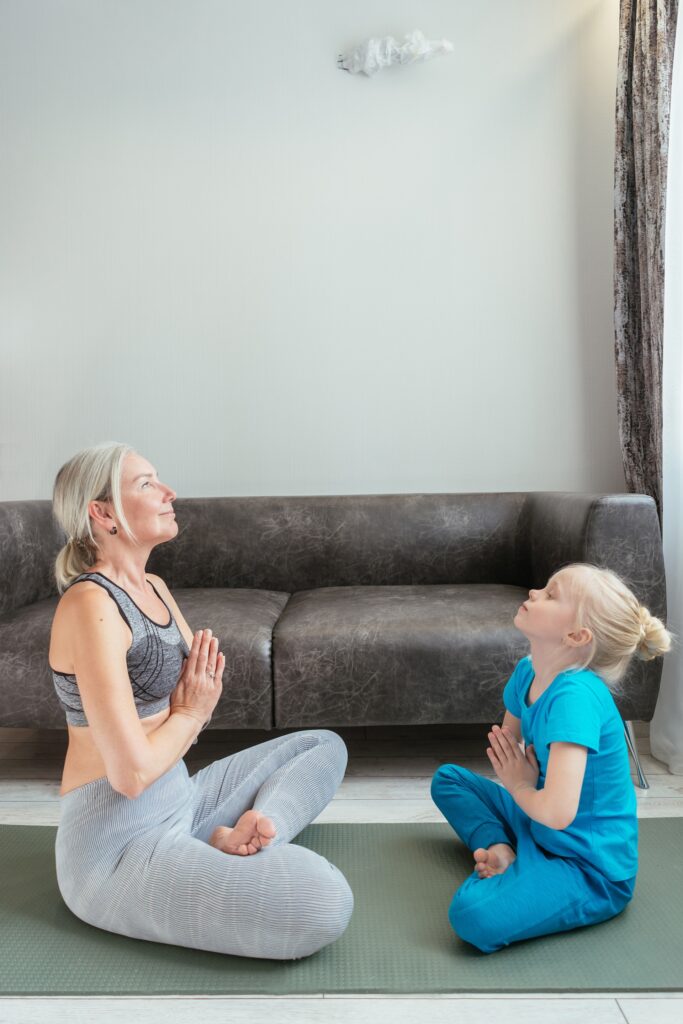
Let’s create an amazing environment where kids can have a blast while reaping all the incredible benefits of yoga! Imagine increased flexibility, improved focus, and reduced stress.
It’s a win-win for everyone!
Make Mindfulness Matter
The benefits of yoga for children at an early age are not confined to the physical realm. It goes beyond improving posture and removing headaches.
By incorporating mindfulness into their regular yoga practice, you can help them develop and strengthen an awareness of their thoughts and feelings. Let’s also not forget mental health, which has been gaining ground in recent years and can be greatly improved through yoga.
So forget about TV, Facebook, and all other forms of screen time entertainment. Instead, why not introduce your kids to the wonderful world of yoga?
Remember, yoga is not about perfecting the poses but about practicing and enjoying the journey.
So, let’s roll out those mats and let the playful stretching begin! Your little ones are bound to fall in love with these poses.

